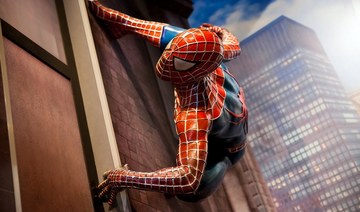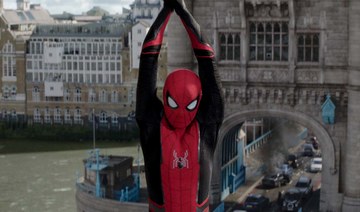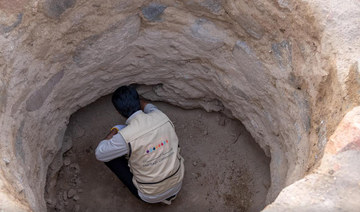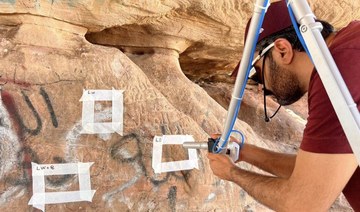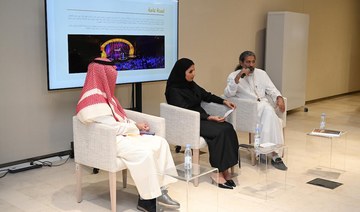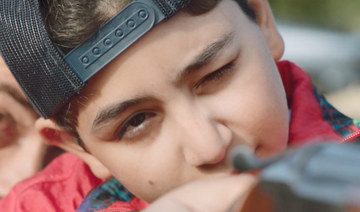LOS ANGELES: Marvel’s superhero films could lose their most famous character after Sony confirmed Tuesday that talks over its deal to share Spider-Man with the Disney-owned studio have broken down.
The Marvel movies have together grossed $22 billion at the global box office, and British actor Tom Holland’s Spider-Man has become an increasingly central figure in the most lucrative franchise in film history.
But while the teen web-slinger has for decades been the crown jewel of the Marvel comic book empire on which the films are based, Sony owns the character’s movie rights.
He only began appearing in Disney-owned Marvel’s “cinematic universe” after the Hollywood giants stuck an almost-unprecedented, and still highly secretive, 2015 deal to co-produce and split profits across the films.
A key aspect of that partnership has now broken down.
Sony confirmed that Marvel Studios boss Kevin Feige — widely credited with the phenomenal boom in comic book movies of the past decade — will no longer produce Spider-Man films, with a spokesman adding the studio was “disappointed.”
“We hope this might change in the future, but understand that the many new responsibilities that Disney has given him... do not allow time for him to work on IP (intellectual property) they do not own,” the Sony spokesman said in a statement sent to AFP.
The separation makes it “almost certain” that the character Spider-Man will be absent from crossover appearances in future Marvel films, according to Hollywood Reporter journalist Graeme McMillan.
Multiple Hollywood media outlets reported earlier Tuesday that Disney and Sony had failed to agree on financial terms for future Spider-Man films.
According to Deadline, which broke the news, Disney had wanted to significantly increase its financial stake in new Spider-Man movies, while Sony refused to alter existing terms.
Sony said the reports “mischaracterized recent discussions,” but thanked Feige for “the path he has helped put us on, which we will continue.”
In financial terms, Spider-Man is one of the most successful superheroes in movie history.
Holland’s iteration of Spider-Man has delivered box office gold — he has appeared in a total of five Marvel Studios and Sony films since the collaboration deal, which collectively grossed almost $8 billion worldwide.
These included Marvel’s “Avengers: Endgame,” the highest-grossing movie of all time.
At Comic-Con last month, Marvel Studios set out a timeline of films and television shows scheduled for the next two years including new outings for popular characters Thor, Black Widow, Doctor Strange and Loki — but none featuring Spider-Man.
Feige is also expected to be busy overseeing new Marvel franchises acquired by Disney in its purchase of 21st Century Fox, which include the popular “X-Men.”
Sony last year produced an Oscar-winning Spider-Man animation separate from Marvel Studios’ domain, as well as a standalone film centered on popular Spider-Man villain Venom.
Disney did not immediately respond to request for comment.
Spider-Man’s Marvel future in peril as Sony deal breaks down
Spider-Man’s Marvel future in peril as Sony deal breaks down
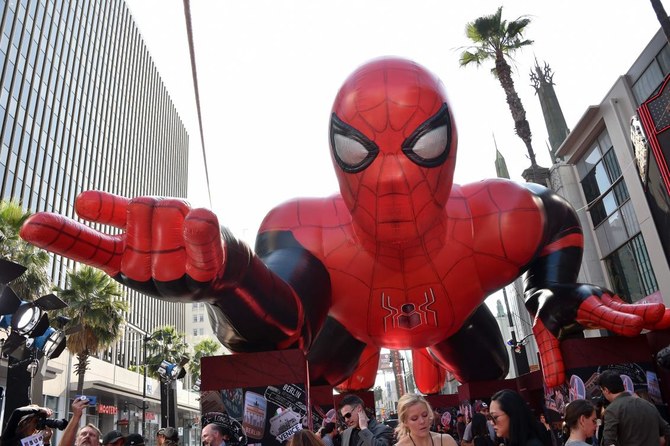
- The Marvel movies have together grossed $22 billion at the global box office
- A key aspect of that partnership has now broken down
US Kuwaiti artist Latifa Alajlan — ‘I used to compare myself to other artists’
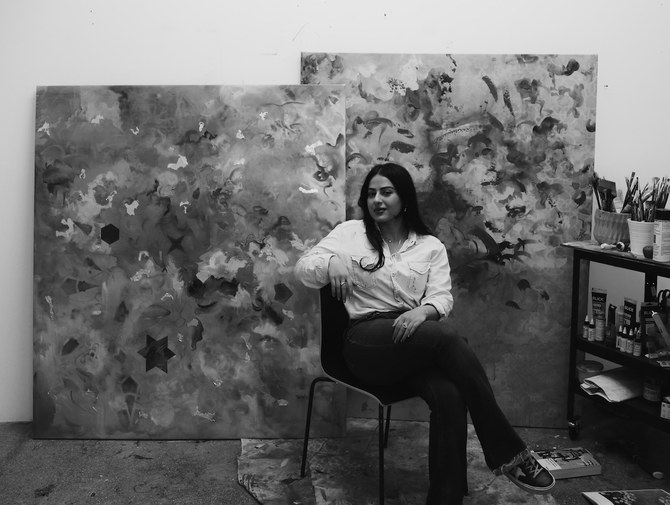
- The third in this year’s series focusing on contemporary Arab-American artists in honor of Arab-American Heritage Month
DUBAI: Kuwaiti artist Latifa Alajlan moved to America in 2016 to study art at Grossmont College in San Diego, followed by a Master of Fine Arts program at the School of the Art Institute of Chicago, where alumni include major American artists Georgia O’Keeffe, Joan Mitchell and Grant Wood.
Now, Alajlan is based in New York, where she is represented by Franklin Parrasch Gallery. “New York is the Makkah of the art world,” she tells Arab News. “You have so many galleries and institutions — that’s what I do every Friday. It’s very meditative for me and I enjoy walking around the city.”
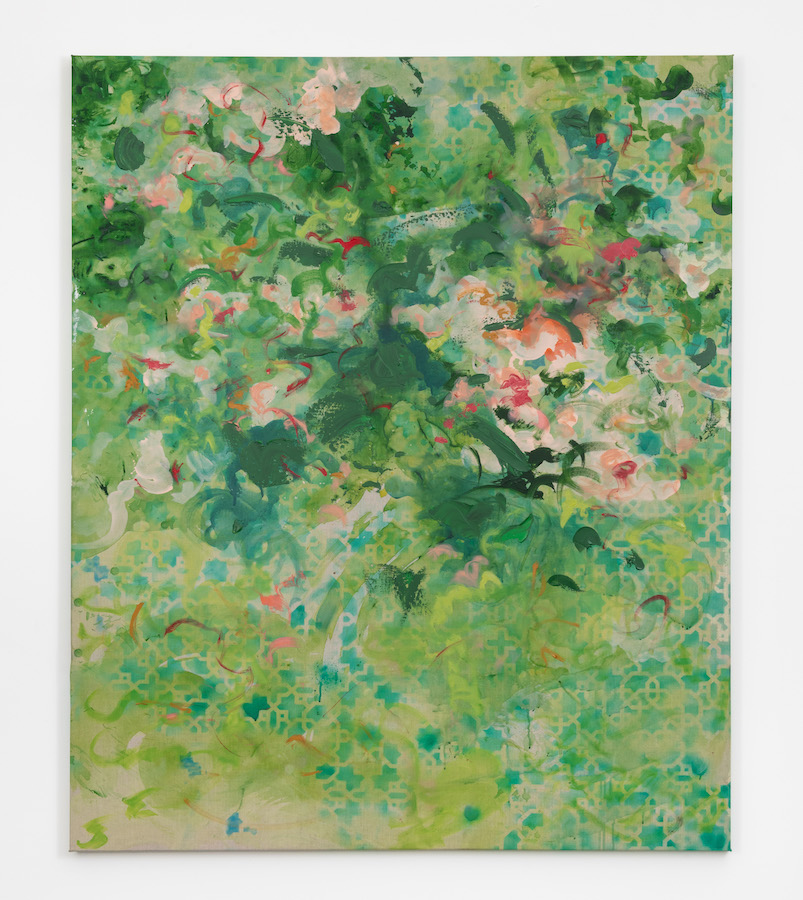
But she is also aware of the competition in such an established artistic environment. “In New York, when you’re a young artist what’s dangerous about it is that you compare yourself to other artists,” she says. “I used to do that a lot and I had to take a step back and realize it was unhealthy. Everyone has their own journey.”
Hers began in Kuwait, where her parents, especially her strict father, would “force” Alajlan and her siblings to visit museums and write essays on artworks. “I just didn’t understand. People were enjoying their summer, and we were going to museums,” she says. “That was boring.”
Now, however, Alajlan can look back on her childhood and understand her parents’ intentions. “That’s what I appreciate: the fact that they kept pushing me,” she says.
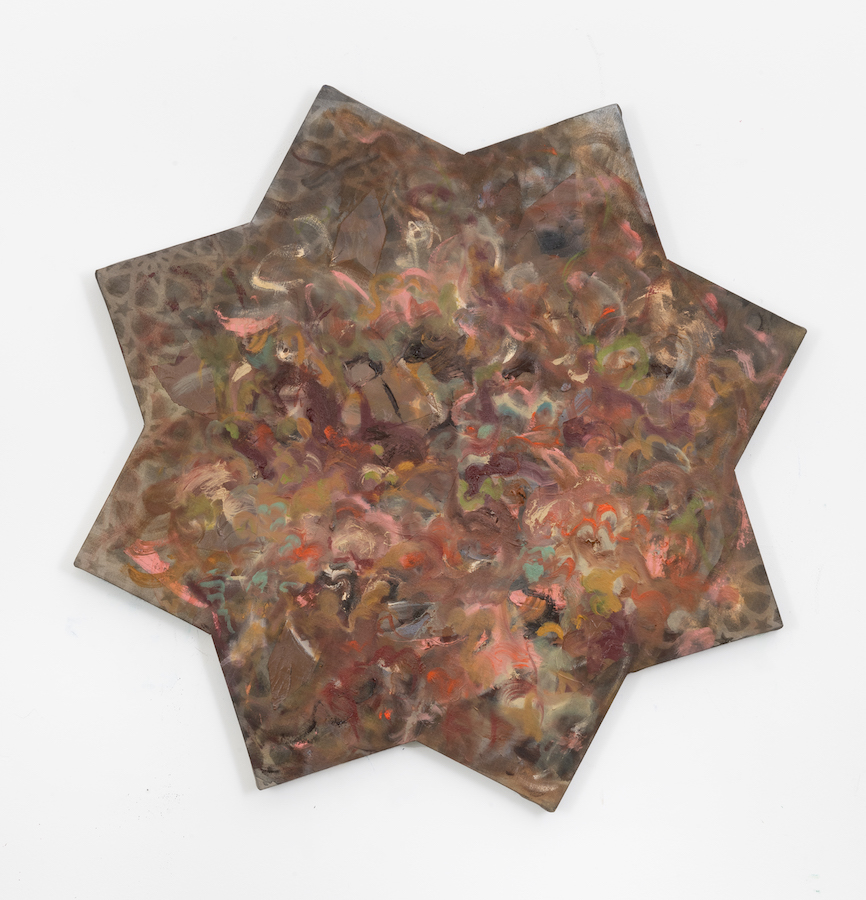
As for her creative practice, Alajlan has experimented with ceramics, glass-blowing, blacksmithing and sculpting. But such labor-intensive mediums weren’t for her. “I almost lost my fingers,” she says. “It’s intense. . . I’ve realized painting is my thing.”
Through her abstract work, Alajlan addresses political, cultural and architectural attributes of her homeland. But she finds inspiration everywhere, she says — from her friends to conversations with strangers. There is an element of mystery to her canvases; she might hide certain parts of her composition with splodges of paint, filling them with gentle gestural strokes and motifs from mosques.
“To me, painting is very therapeutic,” she says. “It’s my way of praying.”
Recipes for success: Chef Lorenzo Buccarini offers advice and a pasta and caviar recipe

DUBAI: “I discovered my passion for cooking at a young age, being drawn to the sights and smells from my family’s kitchen,” Zenon Dubai’s executive chef Lorenzo Buccarini tells Arab News. “My earliest memory of cooking is helping my grandmother prepare lasagna. Those moments ignited a lifelong love affair with the culinary arts.”.
Zenon, located at Kempinski Central Avenue in the heart of Downtown Dubai, offers Mediterranean and Asian cuisine.
“Working with Zenon Dubai has been an enriching experience filled with creativity and collaboration, allowing me to push boundaries,” said Buccarini.
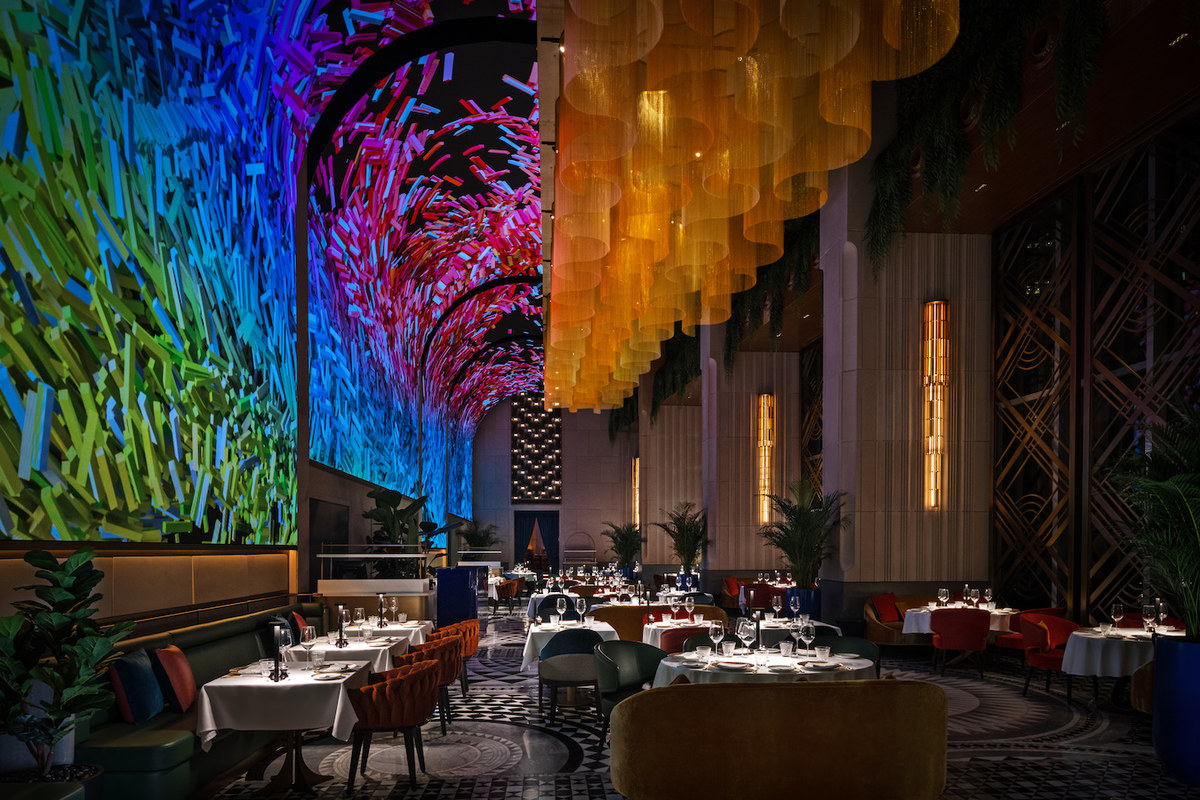
From the vibrant culinary scene of London in 2012 to Istanbul in 2014, Bali in 2016, and Morocco in 2018, Buccarini has dabbled in an array of cuisines over the years. Here, he discusses his go-to dish, favorite cuisine and most challenging dish to prepare.
Q: When you started out, what was the most common mistake you made?
A: Underestimating the importance of proper seasoning. Achieving the perfect balance of flavors is essential in every dish, and mastering seasoning techniques was a valuable lesson early in my career.
What’s your top tip for amateur chefs?
Invest in quality ingredients and don’t be afraid to experiment. Additionally, learn fundamental cooking techniques such as knife skills and proper seasoning, as they form the foundation of any great dish.
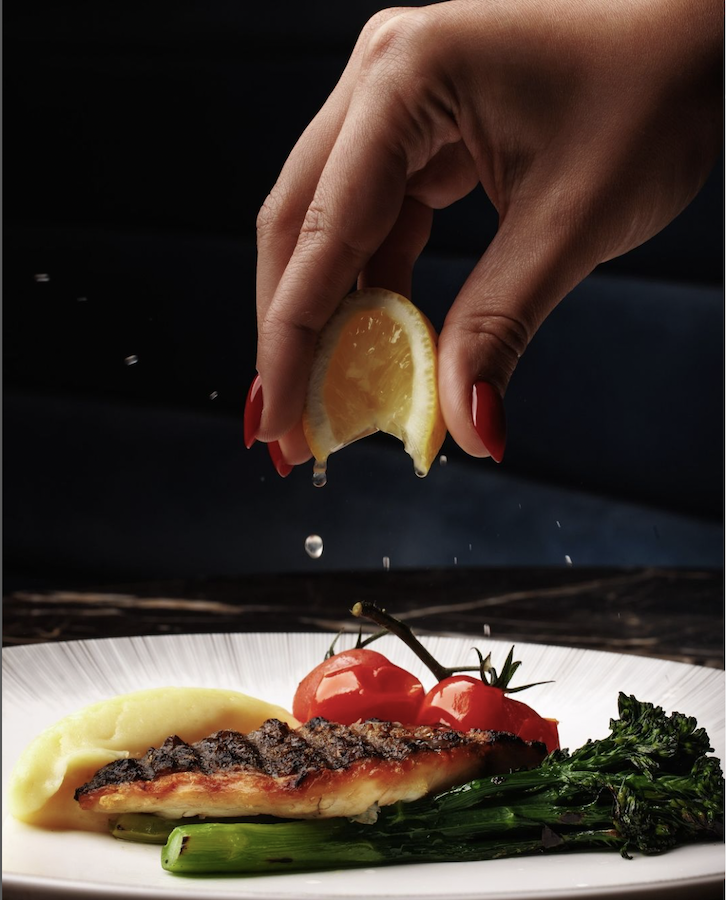
What one ingredient can instantly improve any dish?
Fresh herbs — whether it’s parsley, basil, cilantro, or thyme, incorporating fresh herbs adds depth and complexity to your cooking. They elevate the flavor of any dish.
When you go out to eat, do you find yourself critiquing the food?
Naturally, as a chef, I pay attention to the details if I’m dining out.
What’s the most common issue that you find in other restaurants?
Something I often notice is inconsistency in execution — whether it’s undercooked proteins, over-seasoned dishes, or lackluster presentation. Consistency is key to delivering memorable dining experiences.
And what’s your favorite cuisine when you go out?
I do enjoy exploring different cuisines, but if I had to choose a favorite, it would have to be classic Italian cuisine. There’s something inherently comforting and soul-satisfying about dishes like homemade pasta or a perfectly cooked risotto that never fails to delight the palate.
What’s your go-to dish if you have to cook something quickly at home?
Spaghetti aglio e olio. It’s a simple yet flavorful pasta dish made with garlic, olive oil, chili flakes, and parsley. It’s quick to prepare and showcases the beauty of minimalistic Italian cooking.
What customer behavior most annoys you?
It can be frustrating when customers request significant modifications to a dish without considering the integrity of the recipe. While accommodating dietary restrictions is important, excessive alterations can compromise the intended flavors and balance of the dish.
What’s your favorite dish to cook?
One of them is osso buco. It’s a classic Italian dish made with braised veal shanks, aromatic vegetables, and a rich tomato-based sauce. The slow cooking process allows the flavors to meld together beautifully, resulting in a dish that’s hearty, flavorful, and deeply satisfying.
What’s the most difficult dish for you to get right?
For me, mastering the perfect risotto has always been a challenge. Achieving the ideal balance of creaminess and texture while ensuring the rice is cooked to perfection requires precision and attention to detail. It’s a dish that demands patience and practice to get just right.
As a head chef, what are you like? Are you a disciplinarian? Or are you more laidback?
I try to maintain a balance between discipline and approachability. I do set high standards for my team, and I expect professionalism in the kitchen, but I believe in fostering a supportive and collaborative environment. Effective communication and mutual respect are essential for success in any kitchen.
Chef Lorenzo’s pasta, cream reduction and caviar
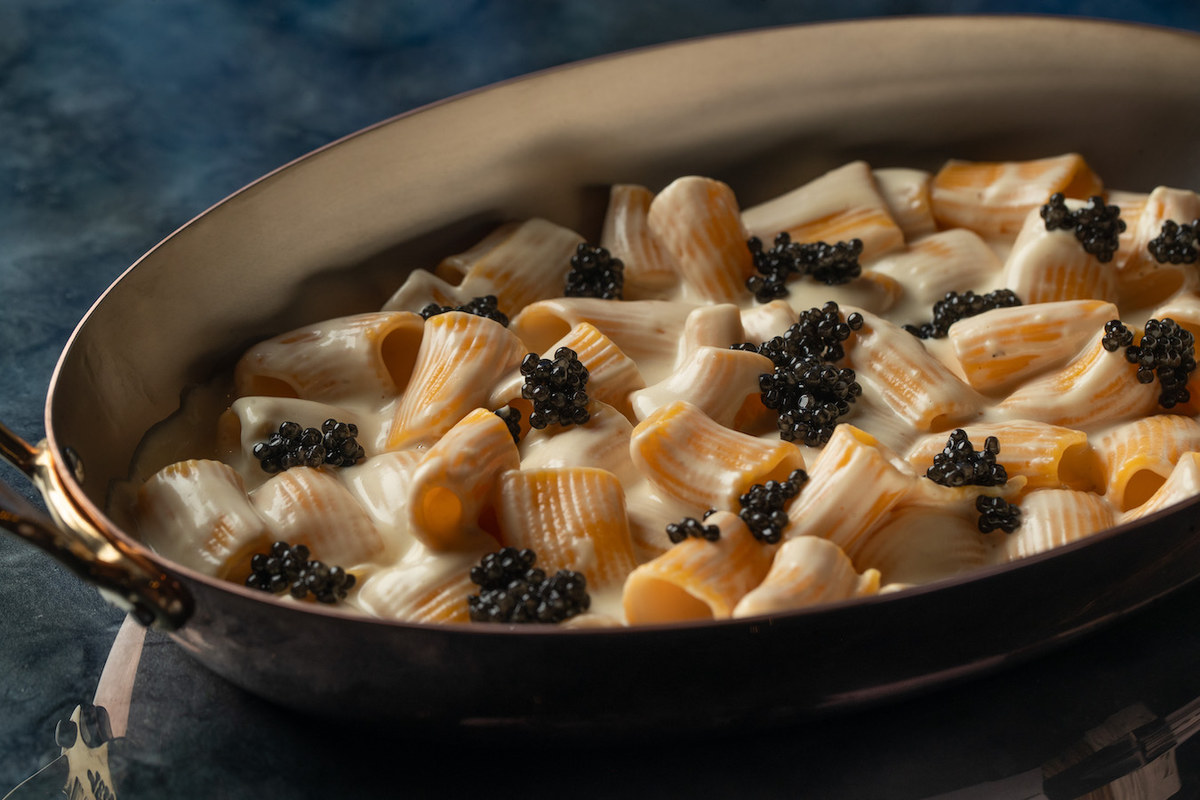
INGREDIENTS
For the cream reduction: 1L double cream; 500g dried porcini; 1L water
For the fresh pasta (can be substituted for store-bought pasta): 600g semolina flour; 1400g 00 flour; 8 fresh eggs; 300g water
INSTRUCTIONS
1. To reduce the cream, add it to a pan and gradually reduce the heat to a slow boil, stirring frequently. As the water boils off, the cream will be reduced. You want to reduce it by half. Then place the pan to one side.
2. For mushroom stock, add the dried porcini to a pan with the water and simmer for one hour. Strain immediately. Reduce the stock by ¾.
3. For the pasta, mix all ingredients together to make a dough. Put in the fridge for one hour. Remove from the fridge and shape it as you like (here at the restaurant we do rigatoni). You can just use standard, store-bought pasta too.
4. Cook the pasta in boiling water for five or six minutes (or as instructed for store-bought pasta), then drain.
5. Put 250g of the cream reduction and 20g of reduced mushrooms into a hot shallow pan. Add a pinch of salt. Add the pasta to the sauce. Stir. Add a little parmesan and top with caviar.
Tunnel, fortification wall unearthed by archaeologists in Jeddah
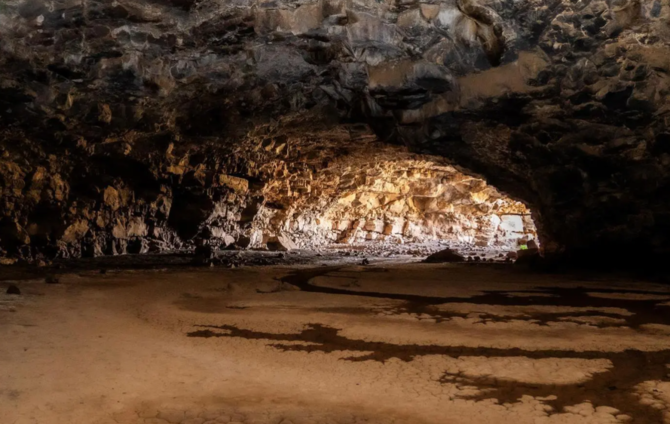
- Findings linked to expansion of city’s defenses in 18th and 19th centuries
- New evidence of human settlement discovered in Umm Jirsan cave in Madinah
RIYADH: A series of archaeological discoveries in Jeddah and Madinah were revealed on Thursday by the Historic Jeddah Program and the Saudi Heritage Commission.
The finding of new evidence of human settlement in Umm Jirsan Cave, located in Madinah’s Harrat Khaybar, was announced by the commission, and the remnants of an ancient underground tunnel and a fortified wall, which once encircled the city, were announced by the program as part of the inaugural phase of Jeddah’s Archaeology Project.
Situated in the northern sector of historic Jeddah, adjacent to Al-Kidwa Square and in close proximity to Al-Bayaa Square, these historical structures date back several centuries.
Some estimations put Jeddah becoming a fortified city during the late 10th to early 11th century, but laboratory analyses suggest that the new finds belong to a later phase of fortification, likely constructed during the 18th and 19th centuries.
Archaeological excavations revealed that by the mid-19th century, the tunnel had become unusable and was quickly filled with sand. However, the wall remained standing until 1947, and some parts of the tunnel’s supporting wall remained intact up to a height of three meters.
Imported European ceramics dating back to the 19th century were also found, highlighting the historic commercial connections of Jeddah. Additionally, a pottery fragment dating back to the 9th century was discovered in Al-Kidwa Square.
These findings are part of a broader collection of archaeological discoveries announced by the Historic Jeddah Program as outcomes of the first phase of its Archaeology Project — a collaborative effort that involves specialized national teams, Saudi experts from the Heritage Commission, and foreign archaeologists.
Their combined expertise has revealed a trove of 25,000 artifacts across four sites, marking a significant development in understanding the cultural evolution of historic Jeddah.
In Madinah, the Heritage Commission announced the discovery of new evidence of human settlement in Umm Jirsan Cave following research conducted by its archaeologists in cooperation with King Saud University, Germany’s Max Planck Institute and Saudi Arabia’s Geological Survey, as part of the Green Arabian Peninsula Project, which focuses on multidisciplinary field research.
It is the Kingdom’s first study that looks into archeological research inside caves, and involved archeological surveys and excavations in several parts of the cave, revealing evidence dating back to the Neolithic period.
The oldest piece of evidence dates back to between 7,000 to 10,000 years ago, encompassing the Copper and Bronze Age periods.
The study of the cave proved that it has been utilized by pastoral groups.
The artifacts discovered include wood, fabric, and some stone tools, in addition to rock art facades depicting scenes of grazing goats, sheep, cows and dogs, as well as hunting activities with different types of wild animals.
The commission noted that the scientific discoveries represent evidence of human settlement in the cave, and a great number of animal bones, including those of striped hyenas, camels, horses, deer, caribou, goats, cows, and wild and domestic donkeys were also identified.
The analysis of human skeletal remains using radioactive isotopes revealed that ancient humans relied on a predominantly carnivorous diet but that, over time, plants were introduced, suggesting the emergence of agriculture.
Saudi Cinema Encyclopedia prints first batch of film books
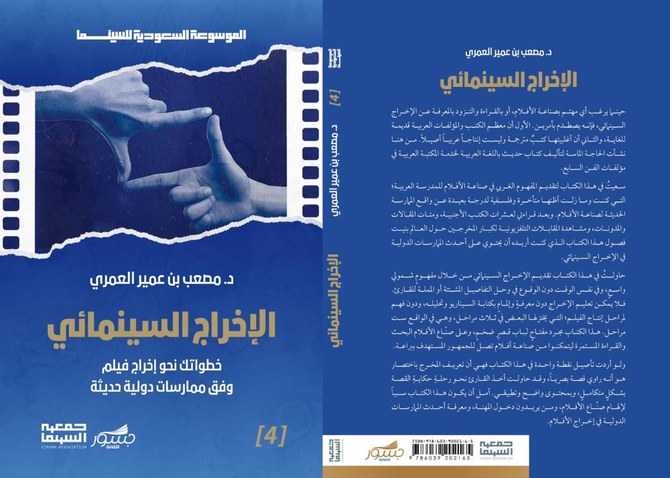
- Initial run of 22 titles part of plan to release 100 books by the end of the year
- First set of releases will be available to the public during the 10th Saudi Film Festival, held May 2-9 this year
RIYADH: The Saudi Cinema Encyclopedia, an initiative launched by the Saudi Cinema Association, will kick off with an initial release of its first 22 books, written by an international group of authors, as its first batch of publications.
The project aims to release 100 books in its first year, published by Josour Al-Thaqafah Publishing House.
The first set of releases will be available to the public during the 10th Saudi Film Festival, held May 2-9 this year.
The aim is to establish a periodic program for book production in Arabic to elevate the Kingdom’s film industry writing from amateur to an area known own for its professionalism and specialization.
Abdulwhab Aloryad, editorial director of the Saudi Cinema Encyclopedia and the bulletin of the Saudi Film Festival “Saafa,” told Arab News that the books were published to enhance knowledge among filmmakers.
“This encyclopedia aims to add to what the Saudi Film Festival has started and be an active contributor in Saudi cinema, reinforcing the beliefs of the festival organizers and their efforts to create a competitive film industry on a global level,” he said.
“The series will continue to be an icon in film knowledge, with its central goals of unveiling Saudi and Arab talent in authorship, presenting the latest new books in Arabic, and transferring specialized knowledge in this field from various other languages into Arabic to be available to those interested in the film industry.”
Aloryad said: “Since its launch in 2008, the Saudi Film Festival has believed in its authentic role in cultural and intellectual development aimed at professionals in the film industry. It has focused on the project of knowledge and has driven the wheel of authoring and translation in all fields related to the film industry in order to elevate all stages of the film industry.
“Based on this belief, the festival has adopted a periodic program for book production, presenting more than 50 books in its previous editions that shed light on various aspects of the film industry.”
Saudi poet and artist Hana Almilli: ‘After each piece, there’s some sort of conclusion’
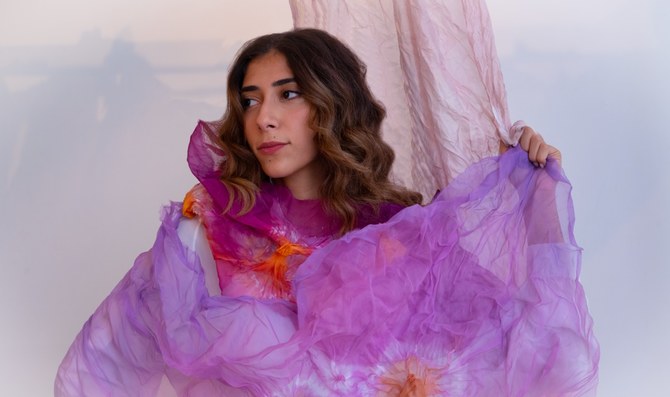
DUBAI: Saudi artist Hana Almilli and her two siblings grew up in a household where creativity and self-expression were actively encouraged. “My mom is a poet,” Almilli tells Arab News. “And my dad was very motivating in terms of doing photography.” Her two brothers, she adds, “are both talented in terms of music and art.” And with her Syrian maternal grandmother, Almilli shares a love of nature and of textiles.
But aside from being one of the main inspirations behind her creative output, Almilli’s family are also the subject of most of it. Through her poetry, embroidery, weaving, dyeing and photography, she explores her own history and her diverse cultural identity (she has Saudi, Syrian, Turkish, Kurdish, and Palestinian ancestry).
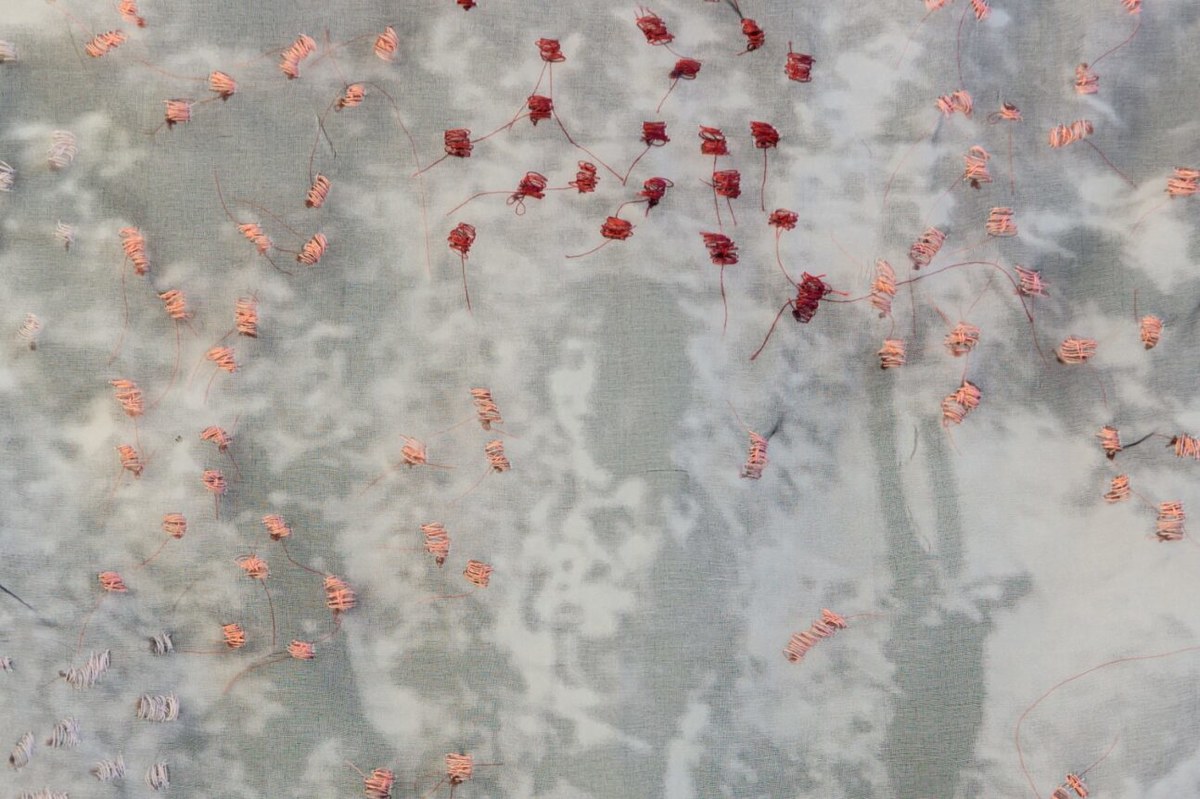
“It’s about me and my family history,” Almilli says of her work, which was most recently on display at Art Dubai in March. “It does really focus on heritage, history, personal narratives.
“Being from all these different identities, it’s always been important to be a part of those cultures,” she continues. “They’re all very different. And sitting with each and every grandparent, which I’ve had the privilege of doing, you learn so much. Growing up I’d have Turkish lullabies from my Turkish grandma, Kurdish news on the televsion that my grandpa would translate. My memory’s not great, but those specific moments from my childhood still remain; I still write about them and I’m still inspired by them. And I still want to almost recreate them in my work.”
Aside from her family history, the other major theme running through Almilli’s work is alienation or estrangement (as made clear in the title of her ongoing series “The Echoes of My Alienation”). That may seem odd in someone who talks so warmly of her close and nurturing family ties, but those same ties could, perhaps, have been one of the causes of her alienation.
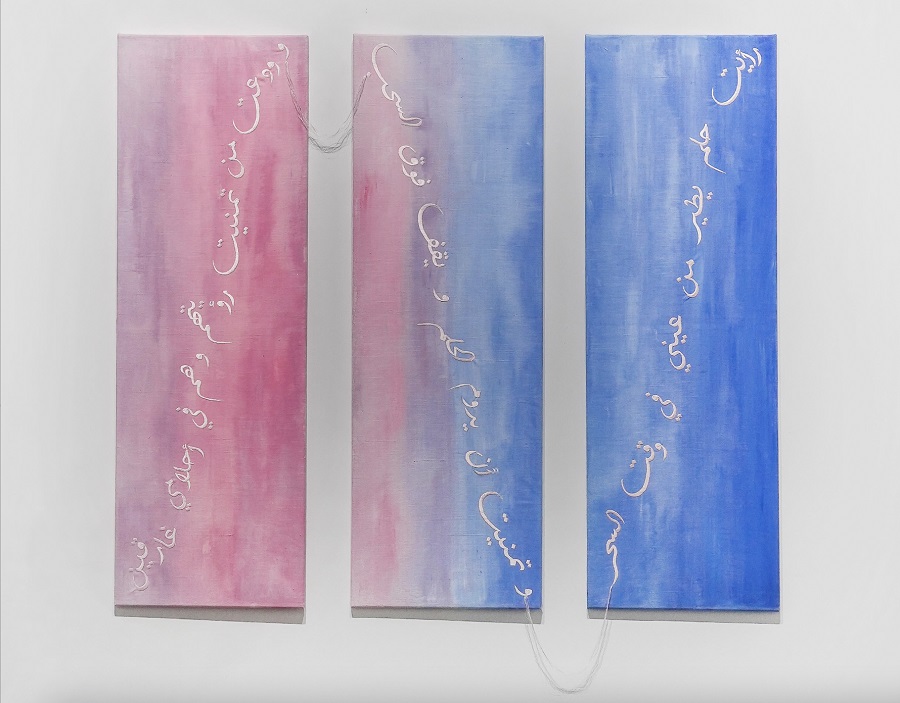
It really began when she moved to the US to attend the California College of the Arts in 2014. Initially, she was studying architecture, but, “I just hated it. I couldn’t express myself in any way that I wanted to.” She shifted courses, eventually graduating with a focus on textiles and creative writing, the latter allowing her to build on her poetry writing, which began as a teenager with verses that were “hidden under the bed — ‘No one’s looking at this.’”
It was towards the end of her college years that she began “The Echoes of My Alienation,” although the emotions it explores had surfaced almost as soon as she arrived in the States.
“My first day in the US, there was an earthquake, and I’d never experienced an earthquake. So it was almost like the beginning of this trial of alienation,” Almilli says. “I was, like, ‘I don’t know if this is for me.’ So persevering, and staying there for five years, was an interesting experience. It grew that alienation. And I wouldn’t say it has dissipated. It still stays, because if it doesn’t then that curiosity about finding out where I come from is gone.”
The series features a number of different works, including several self-portraits and images of family members embellished with embroidery.
“You can see the pieces are obsessively embroidered with little maps. I was almost mapping myself out — those identities that have always been a part of my life but that, to some extent, I had lost as I travelled to the US and was far from home. My grandma had Alzheimer’s at the time, too, so that history was lost with her. My grandpa had passed away in the first year I was in the US as well, so there’s this aspect of rediscovering and recreating history through myself in self-portraits.”
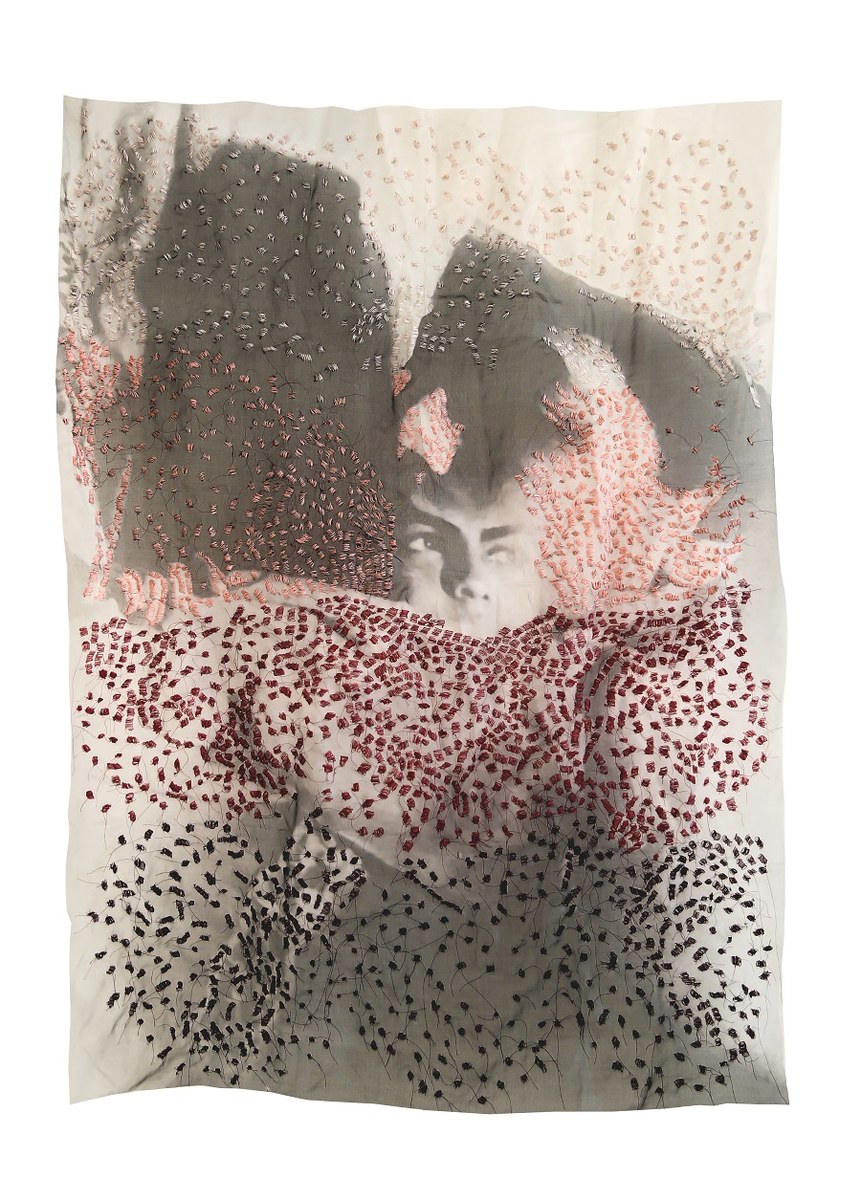
The “most emotional” section of the series, she says, is “Memoirs.” In “Memoirs 2” Almilli has embroidered delicate jasmine flowers over an image of her maternal grandmother in Syria, standing among trees.
“It’s the same technique I use every time, but I intuitively highlight specific parts of an image, whether it’s to hide or accentuate,” Almilli explains. “My grandma and I have a great connection with flowers.”
As she explored working with textiles, Almilli also developed her poetry skills. She has even published the poems that she once hid under her bed.
“At art school, you don’t really have that fear of exposing yourself, because everyone is. So I found the courage to take part in this school publication that went around California as well. That really re-started everything in terms of writing and, ever since, every piece I make has been inspired by a written poem.
“Usually, my works are unique pieces representing a story, or a dream, or someone,” she continues. “It’s interesting, because nowadays, with contemporary art, you’re meant to look at it and make your own sense of it. But, to me, it’s important to know the story of what happened. Being able to write, as an artist, is very important for me because it gives context to my work — what it represents, what it feels like.” She cites her piece on display at the Saudi Arabia Museum of Contemporary Art — “A fragile dawn, a floating wish, a fleeting farewell.” “That was initially a long poem that got turned into an embroidered piece that has the poetry within it,” she explains.
With so many different outlets for her creativity, her mind must be constantly churning with ideas, which seems like it could get exhausting, I suggest. But Almilli, who returned to Saudi Arabia in 2019, explains that she’ll often take a lengthy break after finishing a piece or a series.
“After each piece, there’s some sort of conclusion,” she says. “For example, the piece I just spoke about talks about how, in my dreams, I meet people I’ve loved, but they’re forever drowning in my dreams. Like, my grandma had Alzheimer’s for a few years and we couldn’t get her to Saudi. It’s almost like the only connection I had with her was when she showed up in my dreams. And to be able to write that and grasp it, and put it into something that is physical… it’s very difficult, in the beginning, because you’re facing the idea of that loss in the future, but after that comes a conclusion of sorts: ‘Now I understand these emotions.’ I try to think about what I wrote when I’m making each piece, and — if it’s a difficult piece — to try and heal from it in the process. That difficult feeling becomes something you can bear, whatever it might be.”
And even though her pieces are so personal, Almilli has found her work connects with people on a very emotional level.
“As much as my stories are about my personal history, and my family’s oral history and heritage, at the end of the day there are a lot of people that feel an alienation, or a craving after the loss of a person for that person. So they are stories that people can relate to,” she says.
“I cherish my pieces so much. It’s very difficult for me to let go of them, but I’ve grown to understand that it’s really about being able to share that story with people and show them that there are others going through that,” she continues. “It’s beautiful too, because I hear stories from others that they’ve never spoken about. It’s important, because it shows them that you can embrace multiple aspects of yourself, and that’s OK.”



